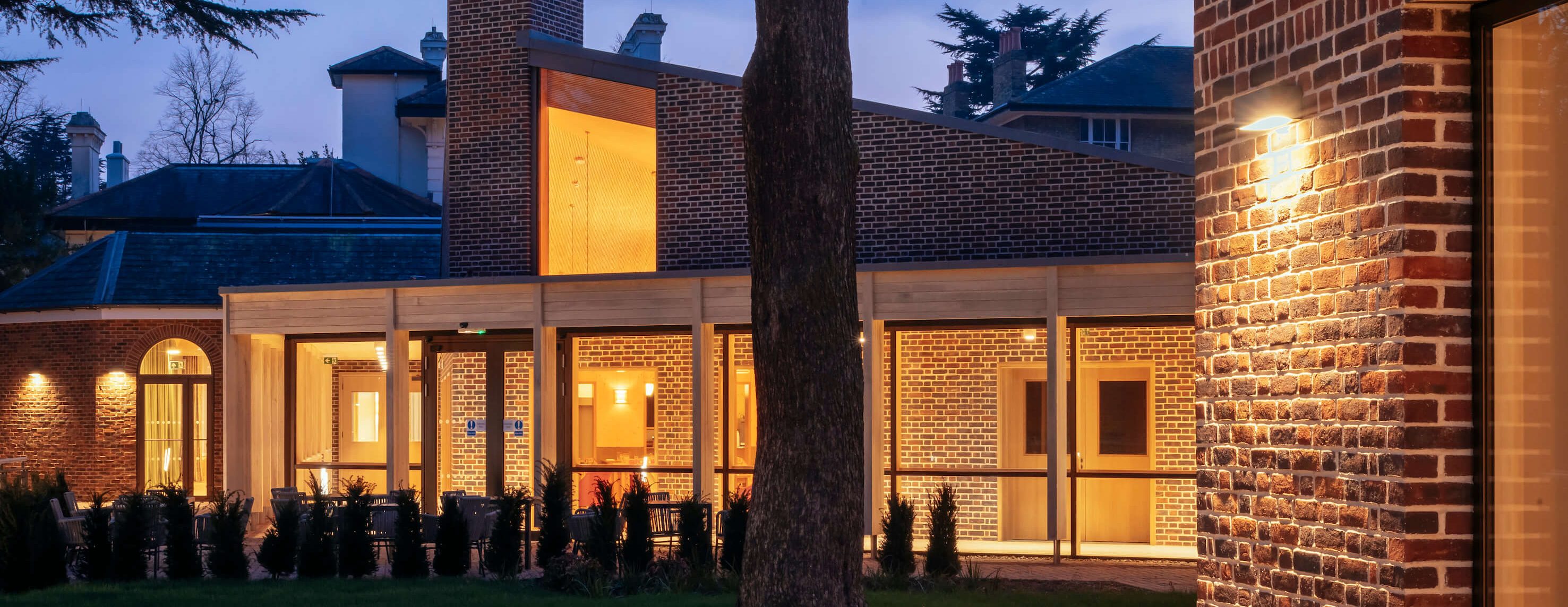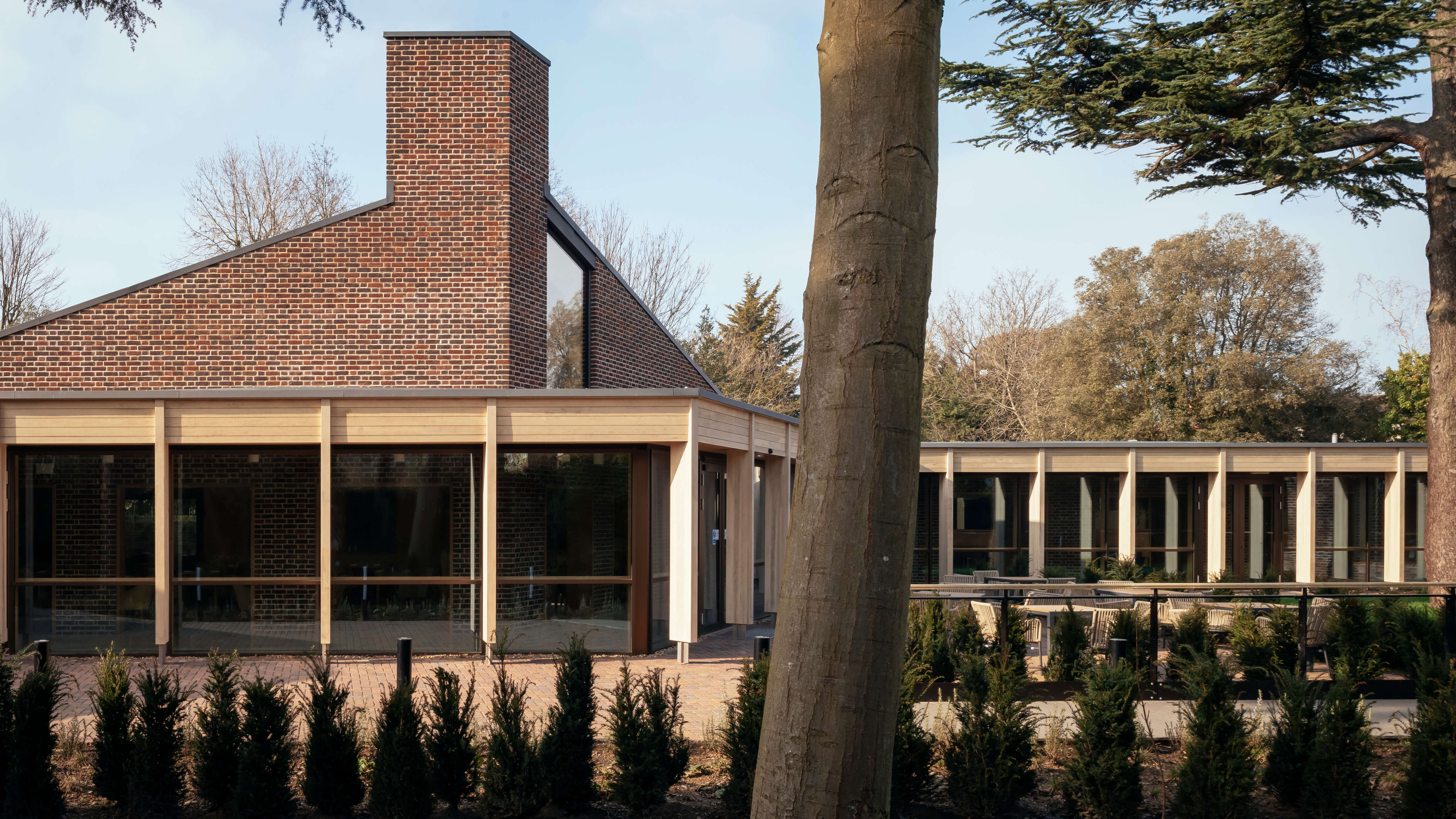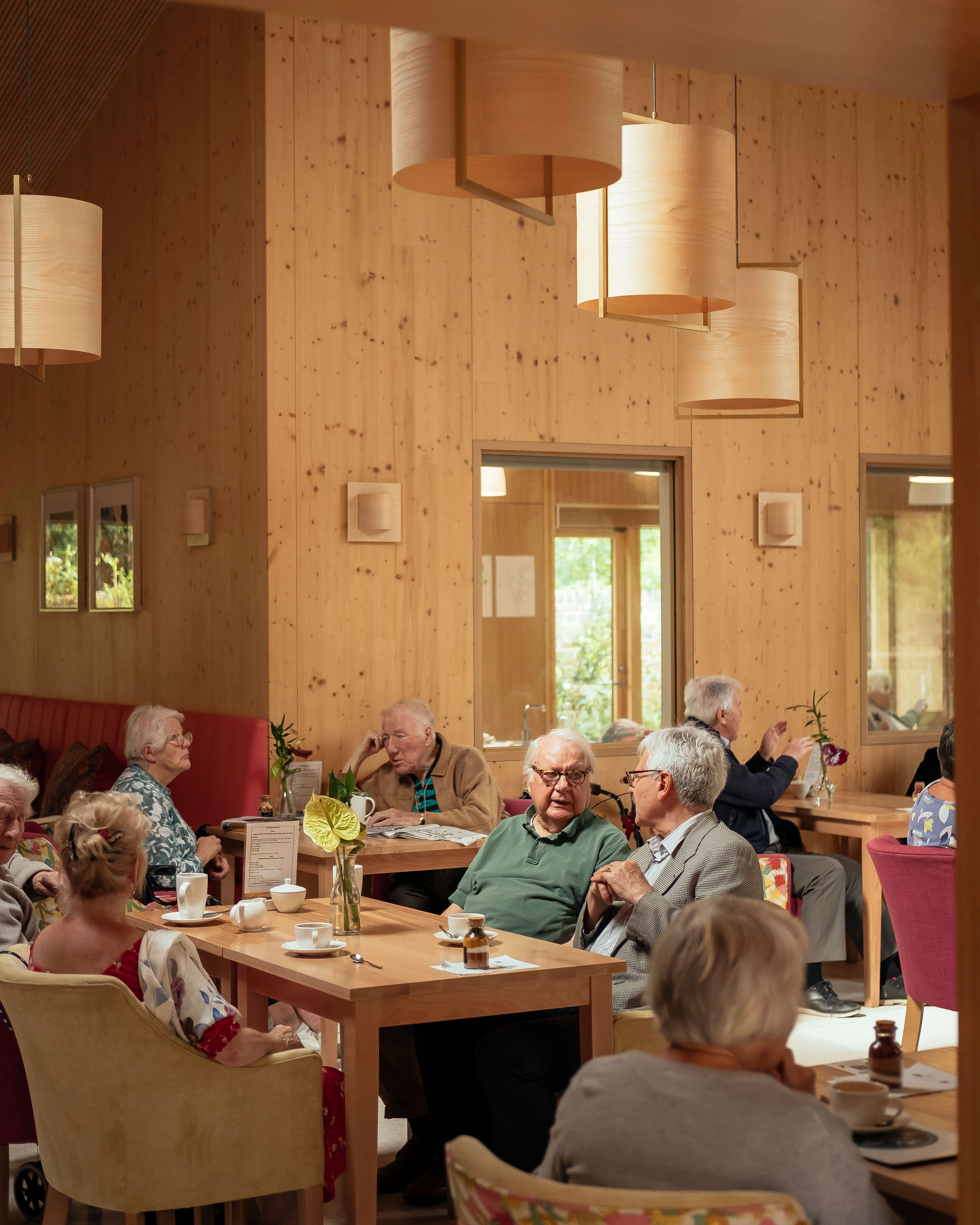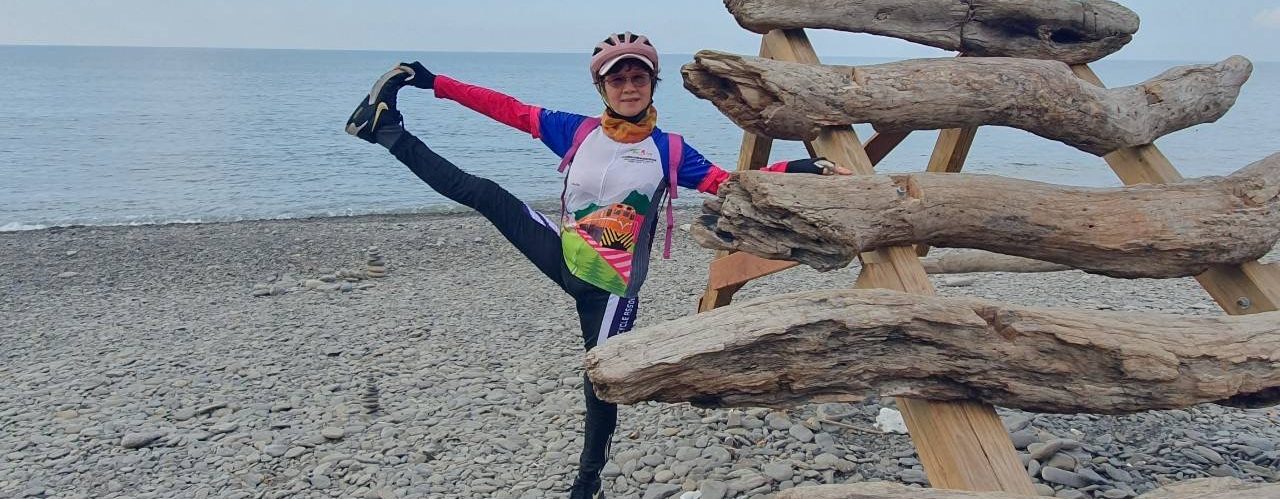The genesis of the College dates back three centuries, rooted in the altruistic vision of Sir John Morden, a prosperous merchant who on his return to the UK wanted to use his wealth for the greater good. He bought some land in Blackheath in London and established Alms Houses, initially designed to accommodate 40 seamen who had encountered hardships. Interestingly, the original Alms House held associations with Christopher Wren, (the college does seem to know how to choose good architects!).
Over time, Morden College has grown into community housing around 300 residents. However, despite its longstanding dedication to its residents, a critical gap remained—a lack of community space that integrated health, care, social interactions, and cultural enrichment. This was the brief for the John Morden Centre, to create a beautiful centre to bring the residents together, to inspire them and to connect them.
At the core of the centre is the bringing together of healthcare and holistic well-being.
The Centre is unarguably beautiful (as you can see yourself in the wonderful film below that Mae has made) but for me the power lies not merely in its architectural beauty but in the rich history of its residents and their stories past and present. As Alex shares with me, the current residents, who have found themselves in financial hardship nonetheless encompass a rich range of experiences—former NGO leaders, teachers, artists, professionals, all individuals who, despite financial adversities in their later years, find inspiration in this space. It was clearly a privilege for Alex collaborating with such a remarkable community.
At the core of the centre is the bringing together of healthcare and holistic well-being. The incorporation of a health centre within the building marks a distinctive feature of the John Morden Centre. The deliberate integration of facilities catering to healthcare needs alongside spaces dedicated to fostering mental and physical enrichment forms a unique and thought-provoking combination within the Centre’s framework. “It’s more than just a structure; it’s a nurturing space that revitalises communal bonds,” Alex tell me. The multifunctional hall, café, art, and craft rooms serve as catalysts, fostering connections, reigniting passions, and alleviating isolation among residents.
The Centre’s need was amplified after the challenging times of the pandemic. While it served as a vaccination centre during Covid, once fully open it became a vital centre to combat the isolation of Covid and help to heal the residents and build a close and supportive community. “The impact of communal spaces on mental and physical health cannot be overstated,” Alex notes, emphasising the crucial role such spaces play in times of adversity.
“I feel very fortunate to have a second home like this where I can always have someone to talk to," resident.
And the residents have really taken to the new building “The new building encourages more activities than before. More residents get involved and mix together,” says Alex. As one resident shared, “I feel very fortunate to have a second home like this where I can always have someone to talk to.” This sentiment encapsulates the Centre’s ethos—creating a place which creates comfort and companionship.
Innovation is at the core of the Centre’s architectural blueprint—a testament to sustainability with its low-carbon design, utilising regenerative materials and natural ventilation. “It’s about creating spaces that seamlessly blend with nature, promote interaction, and reduce environmental impact,” Alex emphasises, celebrating the harmony between architectural finesse and ecological consciousness.
Reflecting on the broader context of communal living, Alex is passionate about the need for shared spaces within urban landscapes. “New developments often lack these communal elements that foster a sense of belonging. They often get costed out by the developers as they don’t see the value. We should reimagine neighborhoods as mini cities, spaces where connectivity, greenery, and shared amenities thrive,” Alex shares, envisioning urban designs that prioritise collective well-being.
Looking ahead, Alex hopes for a future where such centres are everywhere, seamlessly integrated into multigenerational neighborhoods, nurturing connections across age groups and backgrounds. “We must reimagine our urban landscapes, integrating purposeful designs that promote longevity and community engagement,” Alex urges, advocating for a change in thinking in urban planning.
The John Morden Centre stands not just as a symbol of architectural brilliance but as a testament to the transformative power of thoughtful design. It serves as a beacon—a reminder that spaces can transcend mere functionality and become catalysts for unity, health, and enduring connections within communities. As echoed in the words of the RIBA judges, this centre should indeed not be an exception but the norm—a blueprint for a more inclusive, vibrant future where communal spaces thrive, enriching lives and fostering a sense of togetherness.


 &
& 





